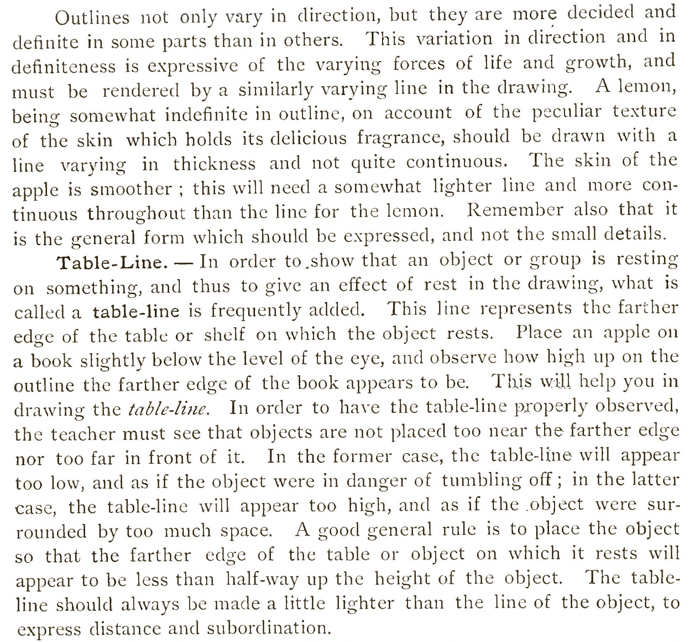

BLOCKING IN DRAWINGS
QUALITY OF LINES IN YOUR DRAWINGS


Every drawing should show a feeling for the character of the material of the object drawn. This is always seen in what is called artistic rendering. Natural objects differ from manufactured objects in substance and texture, and they have varying outlines. The wooden models are exact in form and outline; therefore, in drawing their outlines, a more definite but still transparent line should be used.
Outlines not only vary in direction, but they are more decided and definite in some parts than in others. This variation in direction and in definiteness is expressive of the varying forces of life and growth, and must be rendered by a similarly varying line in the drawing. A lemon, being somewhat indefinite in outline, on account of the peculiar texture of the skin which holds its delicious fragrance, should be drawn with a line varying in thickness and not quite continuous. The skin of the apple is smoother; this will need a somewhat lighter line and more continuous throughout than the line for the lemon. Remember also that it is the general form which should be expressed, and not the small details.
In order to.show that an object or group is resting on something, and thus to give an effect of rest in the drawing, what is called a table-line is frequently added. This line represents the farther edge of the table or shelf on which the object rests. Place an apple on a book slightly below the level of the eye, and observe how high up on the outline the farther edge of the book appears to be. This will help you in drawing the table-line. In order to have the table-line properly observed, the teacher must see that objects are not placed too near the farther edge nor too far in front of it. In the former case, the table-line will appear too low, and as if the object were in danger of tumbling off; in the latter case, the table-line will appear too high, and as if the .object were surrounded by too much space. A good general rule is to place the object so that the farther edge of the table or object on which it rests will appear to be less than half-way up the height of the object. The table-line should always be made a little lighter than the line of the object, to express distance and subordination.